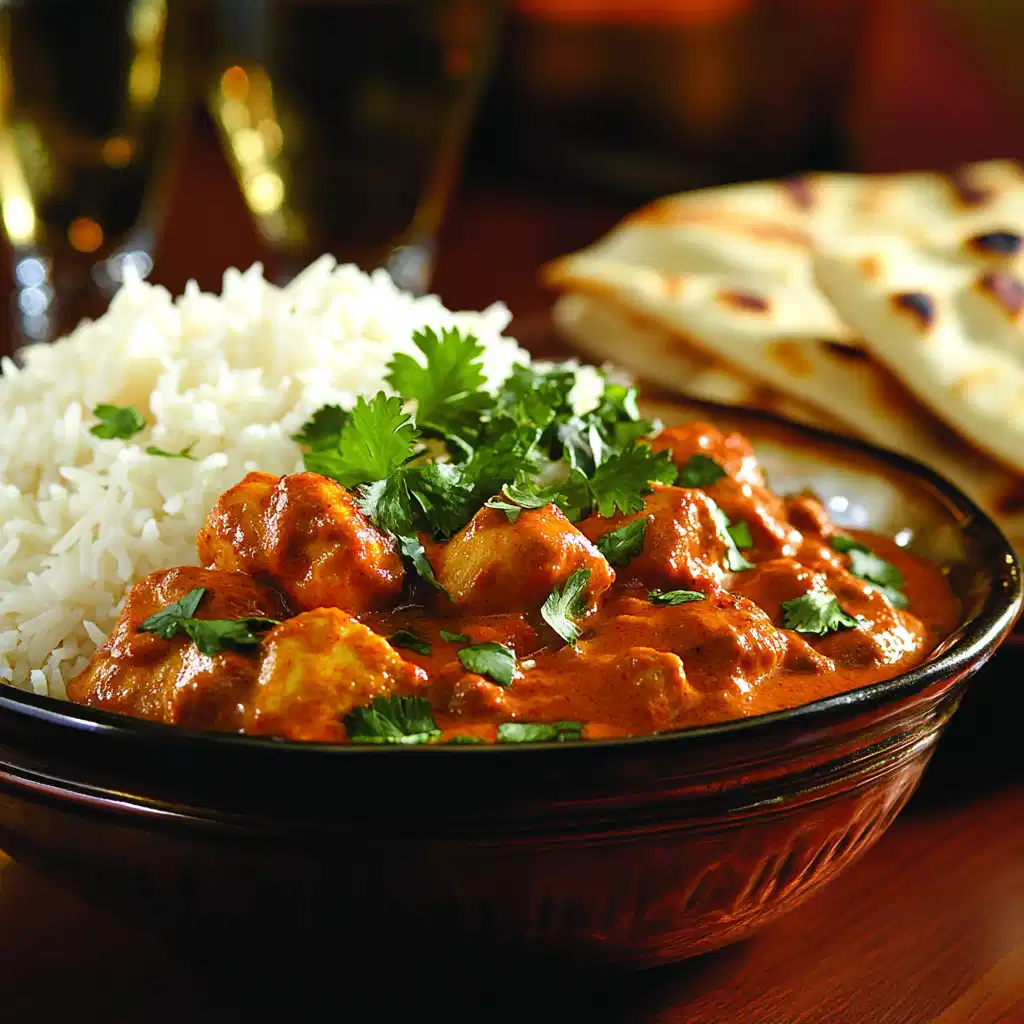Introduction
Chicken Tikka Masala Nutrition! Chicken tikka masala is a globally popular dish, combining tender chicken with a rich, spiced tomato sauce. Known for its bold flavors, this dish is a favorite in both Indian and Western cuisines.
While delicious, chicken tikka masala can be calorie-dense and high in fat, depending on how it’s prepared. Understanding its nutritional content is key to enjoying it as part of a balanced diet.https://royalesrecipes.com/chicken-tikka-masala-calories-what-you-need-to-know/
In this guide, we’ll break down the nutritional value of chicken tikka masala, explore its health benefits and potential drawbacks, and provide tips for making it healthier without sacrificing flavor.
Nutritional Breakdown of Chicken Tikka Masala
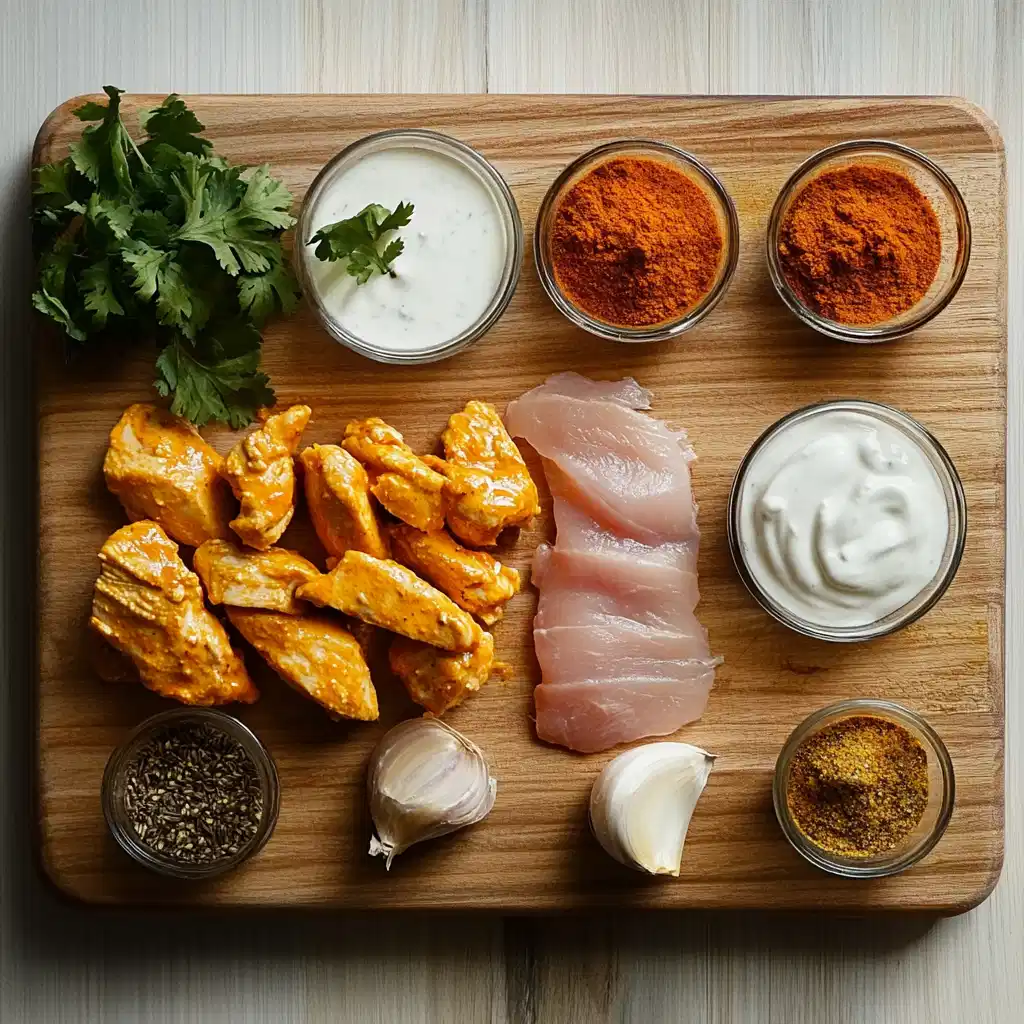
Chicken tikka masala is a balanced dish that provides a mix of macronutrients and micronutrients. The exact nutritional profile depends on the ingredients used and the serving size. Here’s a general breakdown based on a 1-cup serving (approximately 240 grams):
Macronutrients ” Chicken Tikka Masala Nutrition “
- Calories: ~250–400 (depending on cream, butter, and chicken cuts).
- Protein: ~25–30 grams (high due to chicken content).
- Fat: ~10–20 grams (primarily from cream, butter, or oil).
- Saturated Fat: ~5–8 grams (if heavy cream or ghee is used).
- Carbohydrates: ~10–15 grams (from tomatoes and spices).
- Sugars: ~5–8 grams (natural sugars from tomatoes or added sweeteners).
Micronutrients ” Chicken Tikka Masala Nutrition “
Chicken tikka masala is also rich in vitamins and minerals, primarily due to its ingredients:
- Vitamin A: Contributed by tomatoes and spices, supports vision and immunity.
- Vitamin C: From tomatoes and potential garnishes like lemon, aids in skin health and immune function.
- Iron: Found in chicken and spices like turmeric and cumin, helps with oxygen transport in the blood.
- Calcium: Present in yogurt-based marinades or creamy sauces, supports bone health.
Sodium Content ” Chicken Tikka Masala Nutrition “
Chicken tikka masala can be high in sodium, especially in restaurant versions:
- Homemade Version: ~400–600 mg per serving.
- Restaurant Version: ~800–1,200 mg per serving (due to added salt and processed ingredients).
Understanding this nutritional breakdown allows you to customize the dish based on your dietary needs.
Health Benefits of Chicken Tikka Masala
Chicken tikka masala, when prepared thoughtfully, offers several health benefits thanks to its nutrient-rich ingredients. Here’s how this popular dish can contribute to a balanced diet:
High Protein Content
- Chicken is an excellent source of lean protein, which is essential for muscle growth, repair, and overall health.
- A single serving of chicken tikka masala provides approximately 25–30 grams of protein, making it a great option for meeting daily protein needs.
Rich in Vitamins and Antioxidants
- Tomatoes: A key ingredient in the sauce, tomatoes are packed with vitamin C and lycopene, a powerful antioxidant that supports heart health and reduces inflammation.
- Spices: Ingredients like turmeric, cumin, and ginger are known for their anti-inflammatory and immune-boosting properties.
- Turmeric: Contains curcumin, which has potential benefits for reducing inflammation and improving brain health.
- Ginger: Aids in digestion and has antioxidant effects.
Balanced Macronutrients
- Chicken tikka masala includes a mix of proteins, fats, and carbohydrates, providing sustained energy.
- It’s a hearty, filling dish that can keep you satisfied for longer, reducing the need for excessive snacking.
Customizable for Dietary Needs
- Homemade chicken tikka masala can easily be adapted to fit various diets:
- Use lean chicken breast and low-fat yogurt for a lighter version.
- Substitute cream with plant-based milk for a dairy-free option.
- Skip added sugar or sweeteners to reduce calorie and carb intake.
Ideal for Meal Prep
- Chicken tikka masala reheats well, making it a convenient choice for meal prep. It pairs with healthy sides like brown rice, quinoa, or steamed vegetables, adding versatility to your weekly meals.
Despite its richness, chicken tikka masala can be a nutritious option when prepared with wholesome ingredients.
Concerns About Chicken Tikka Masala Nutrition
While chicken tikka masala offers numerous health benefits, certain aspects of its nutrition may raise concerns, especially for those watching their calorie or sodium intake.https://www.livestrong.com/article/375627-chicken-tikka-masala-nutrition-information/
High Calorie Count
- Rich Ingredients: Traditional recipes often include heavy cream, butter, or ghee, which can significantly increase the calorie content.
- Restaurant Versions: Often range from 400–700 calories per serving, primarily due to the liberal use of fats and larger portion sizes.
- Homemade Versions: Can be lighter, but still average 250–400 calories depending on preparation.
Saturated Fats
- The use of cream and ghee contributes to higher levels of saturated fat, which can impact heart health if consumed in excess.
- Typical Amount: ~5–8 grams of saturated fat per serving.
- Healthier Substitutes: Low-fat yogurt or light coconut milk can reduce saturated fat content.
Sodium Levels
- Chicken tikka masala can be high in sodium, especially in restaurant or pre-packaged versions:
- Restaurant Versions: Contain up to 1,200 mg of sodium per serving, which is nearly half the recommended daily limit.
- Homemade Versions: Average around 400–600 mg per serving, depending on added salt and ingredients.
- Health Tip: Reduce sodium by controlling added salt and using fresh, unprocessed ingredients.
Added Sugars
- Some recipes, especially restaurant-style versions, include added sugar or sweeteners to balance the tanginess of tomatoes.
- Average Sugar Content: ~5–8 grams per serving, depending on the recipe.
- Health Tip: Skip added sugar and rely on natural sweetness from tomatoes and spices.
Portion Size
- Oversized portions can make this dish more calorie-dense than expected, particularly when paired with high-calorie sides like naan or rice.
- Tip for Control: Stick to a 1-cup serving and pair it with lighter sides like steamed vegetables or a small portion of brown rice.
By being mindful of these concerns, you can enjoy chicken tikka masala while maintaining a balanced diet.
How to Make Chicken Tikka Masala Healthier
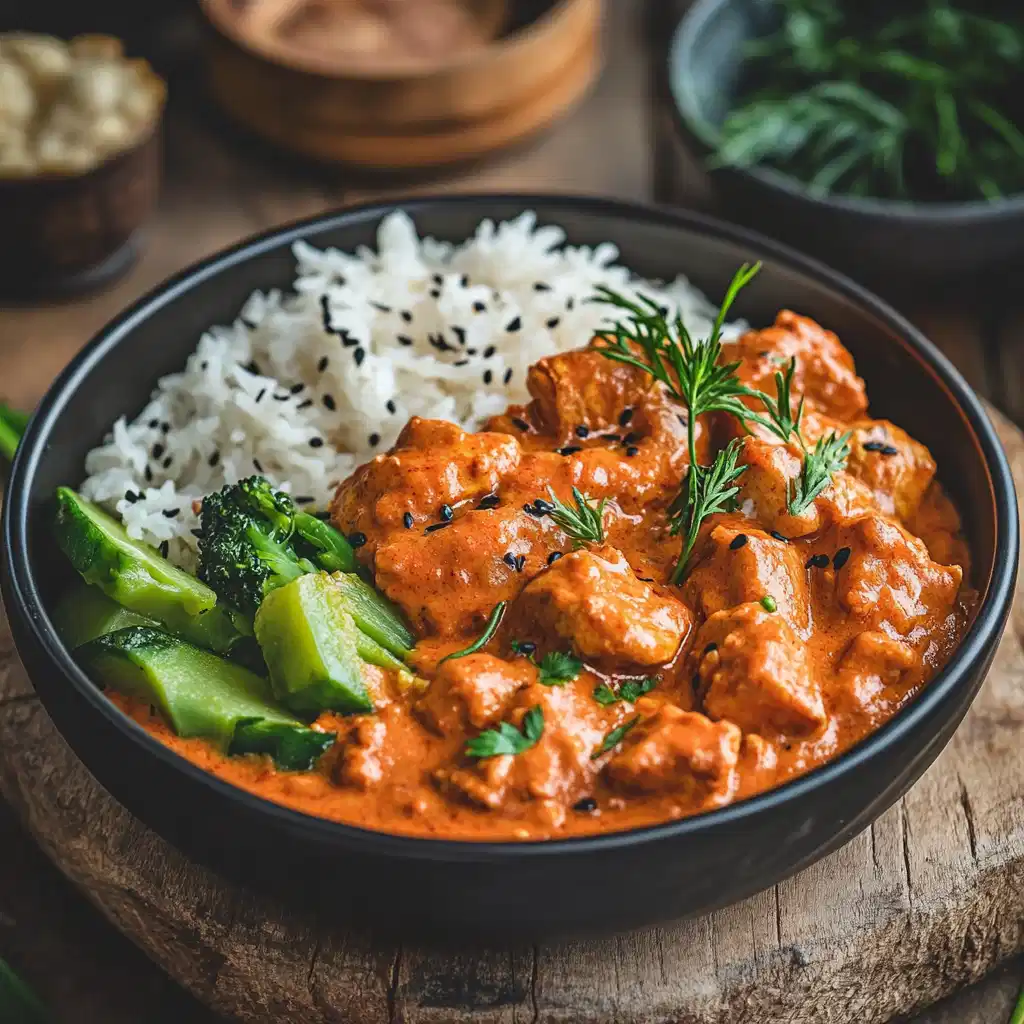
With a few simple adjustments, chicken tikka masala can be transformed into a lighter, healthier dish without compromising its signature flavor.
Use Leaner Proteins
- Replace chicken thighs with skinless, boneless chicken breast to reduce fat and calories.
- For a vegetarian option, use tofu or chickpeas as a protein substitute.
Swap High-Calorie Ingredients
- Heavy Cream: Use low-fat Greek yogurt, light coconut milk, or unsweetened almond milk for creaminess with fewer calories.
- Butter or Ghee: Reduce the amount or replace with olive oil for a healthier fat source.
Reduce Sodium
- Control sodium levels by using fresh tomatoes or low-sodium canned tomatoes for the sauce.
- Avoid pre-packaged spice mixes, which often contain added salt, and use fresh or dried spices instead.
Cut Back on Added Sugars
- Skip any added sugar or sweeteners in the sauce. Instead, balance the tanginess of tomatoes with naturally sweet ingredients like grated carrots or a splash of coconut milk.
Adjust Portion Sizes
- Stick to a 1-cup serving size of chicken tikka masala to manage calorie intake.
- Pair with smaller portions of sides like basmati rice or naan and bulk up your plate with steamed or roasted vegetables.
Experiment with Cooking Methods
- Grill or Broil the Chicken: Cooking the chicken on a grill or under a broiler gives it a smoky flavor with minimal added fat.
- Sauté with Less Oil: Use a non-stick pan and a teaspoon of oil to toast spices and prepare the sauce.
Incorporate More Vegetables
- Add vegetables like spinach, bell peppers, or zucchini to the sauce to increase fiber and nutrient content while reducing calorie density.
Example of a Low-Calorie Recipe:
Ingredients:
- 1 lb skinless, boneless chicken breast
- 1 cup plain low-fat yogurt (for marinade)
- 1 can (14 oz) crushed tomatoes
- 1/4 cup light coconut milk or almond milk
- 2 tsp olive oil
- Spices: 1 tsp turmeric, 1 tsp garam masala, 1 tsp cumin, 1/2 tsp cayenne
Instructions:
- Marinate chicken in yogurt and spices for 30 minutes.
- Grill or broil chicken until lightly charred.
- In a pan, sauté spices with olive oil, then add crushed tomatoes and simmer for 10 minutes.
- Stir in coconut milk, add grilled chicken, and cook for another 5 minutes.
Calories Per Serving (1 Cup): ~250–300 calories.
By making these simple changes, you can enjoy a healthier version of chicken tikka masala that fits seamlessly into a balanced diet.
Nutritional Comparison: Restaurant vs. Homemade Chicken Tikka Masala
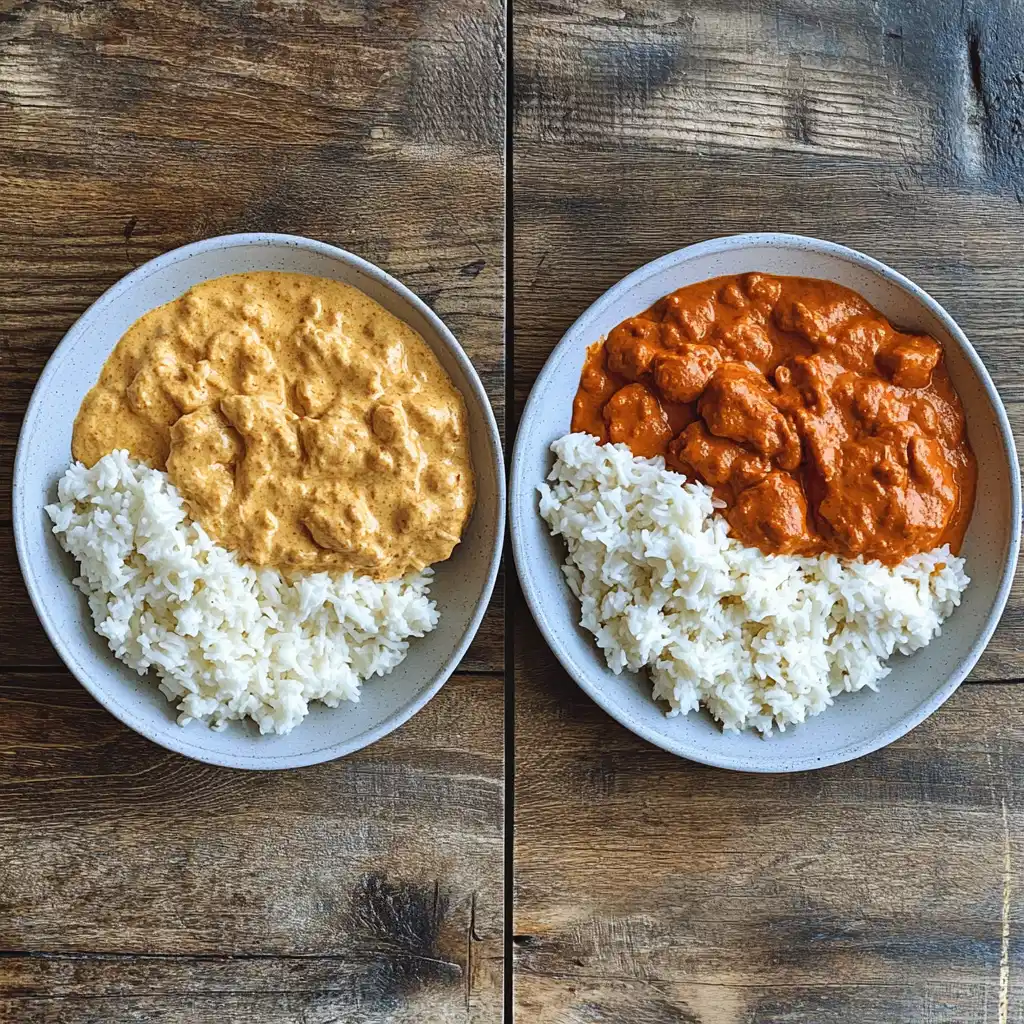
Restaurant Chicken Tikka Masala
Restaurant versions of chicken tikka masala are often richer and higher in calories due to larger portions and the liberal use of fats:
- Calories: 400–700 per serving (1.5–2 cups).
- Protein: ~25–30 grams per serving.
- Fat: 20–30 grams, with higher levels of saturated fat from cream and ghee.
- Sodium: 800–1,200 mg per serving, due to added salt and pre-packaged ingredients.
- Why So High?
- Heavy cream, butter, and ghee are used for flavor and richness.
- Portions are often oversized.
- Pre-made sauces or spice mixes may contain additional salt and sugar.
Homemade Chicken Tikka Masala
Homemade versions allow for healthier ingredient choices and portion control:
- Calories: 250–400 per serving (1 cup).
- Protein: ~25–30 grams per serving, depending on the cut of chicken.
- Fat: 10–15 grams, with lower saturated fat if using low-fat yogurt or light coconut milk.
- Sodium: 400–600 mg per serving, depending on added salt.
- Why Healthier?
- You can reduce or substitute high-calorie ingredients like cream and butter.
- Fresh spices and tomatoes allow for better control of sodium and sugar levels.
- Smaller portions help manage calorie intake.
Key Differences
| Aspect | Restaurant Version | Homemade Version |
|---|---|---|
| Calories | 400–700 | 250–400 |
| Protein | 25–30 grams | 25–30 grams |
| Fat | 20–30 grams | 10–15 grams |
| Sodium | 800–1,200 mg | 400–600 mg |
| Portion Size | 1.5–2 cups | 1 cup |
Which Is Better?
While restaurant versions are convenient and indulgent, homemade chicken tikka masala is the healthier option. By preparing it at home, you can enjoy the same rich flavors with better nutritional control, making it suitable for various dietary needs.
FAQs
How many calories are in chicken tikka masala?
The calorie count depends on preparation:
- Homemade Versions: ~250–400 calories per 1-cup serving.
- Restaurant Versions: ~400–700 calories per serving, with larger portions and richer ingredients.
Is chicken tikka masala healthy?
Chicken tikka masala can be part of a healthy diet when made with lean protein, fresh ingredients, and minimal added fats. Homemade versions are typically healthier, offering control over sodium, fat, and calorie content.
What nutrients does chicken tikka masala provide?
Chicken tikka masala is rich in:
- Protein: ~25–30 grams per serving, supporting muscle repair and growth.
- Vitamins: Vitamin A and C from tomatoes and spices.
- Minerals: Iron and calcium, contributing to blood health and bone strength.
How can I make chicken tikka masala keto-friendly?
To make it keto-friendly:
- Use full-fat yogurt or heavy cream for the sauce.
- Skip high-carb sides like rice or naan, and serve with cauliflower rice or steamed vegetables.
- Avoid sugar or sweeteners in the recipe.
What’s the difference between butter chicken and chicken tikka masala?
- Butter Chicken: Creamier and sweeter, with more butter and cream.
- Chicken Tikka Masala: Spicier and tangier, with a tomato-forward flavor.
- Butter chicken is generally higher in calories due to richer ingredients.
Can I freeze chicken tikka masala?
Yes! Chicken tikka masala freezes well for up to 3 months:
- Store in an airtight container.
- Reheat gently on the stovetop to preserve texture and flavor.
Conclusion
Chicken tikka masala is a beloved dish that offers a delicious balance of spices, creamy textures, and satisfying protein. While it can be calorie-dense and high in sodium when prepared traditionally or served at restaurants, homemade versions provide an opportunity to enjoy this dish in a healthier way.
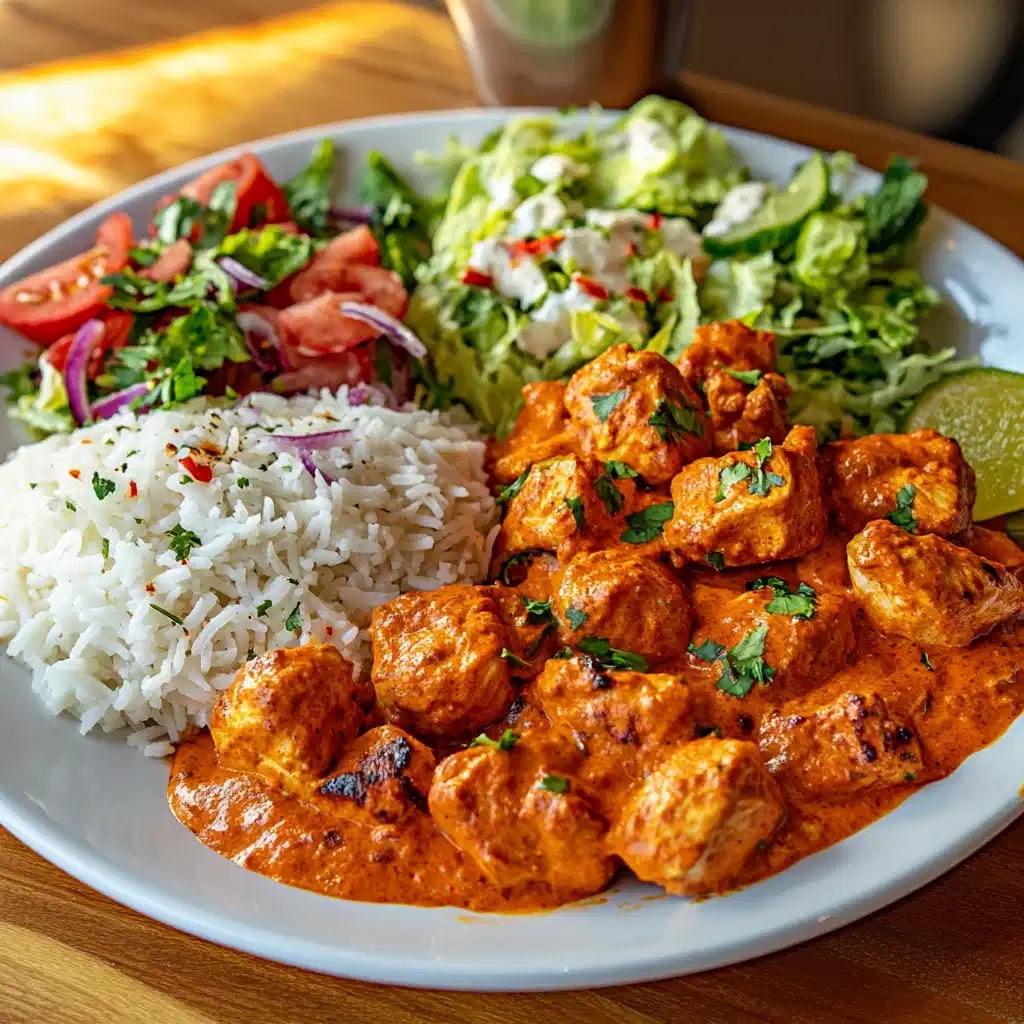
By using lean chicken breast, low-fat dairy alternatives, and fresh spices, you can significantly reduce the calorie and fat content without compromising on flavor. Pairing it with lighter sides like cauliflower rice or steamed vegetables further enhances its nutritional profile, making it a wholesome addition to your diet.
Whether you’re preparing it at home or enjoying it occasionally at a restaurant, chicken tikka masala can be a nutritious, flavorful option when consumed mindfully. Experiment with healthier versions to create a dish that suits your dietary needs while still delivering the bold flavors you love!

